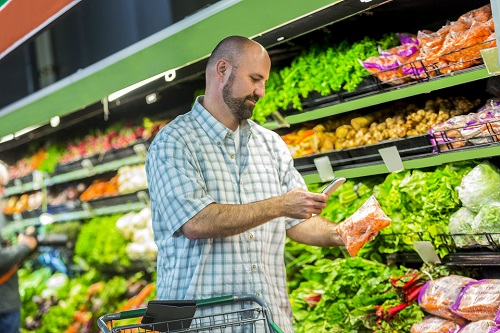7 Tips to Save Money on Produce

Eating a kidney-friendly diet is a challenge in itself, and doing so on a budget can make it more difficult. However, following both your diet and food budget is possible if you create a plan. Fortunately, in-season produce may be one of the best bargains in the grocery store. Check out the seven tips below to learn how to incorporate nutritious, kidney-friendly produce into your diet without breaking the bank.
Plan ahead.
Plan your shopping list around what meals/snacks you will have for the week, and check what fruits and vegetables you already have on hand so that you only buy the ones you need. If you plan to eat any meals away from home, factor that into your budget as well.
Check the circular and use coupons.
If your grocery store has a weekly circular or store ad, read it before shopping to look for deals and coupons. You can also check the store’s website for coupons or ask for coupons at the customer service desk. If possible, plan your shopping list around coupons and sales.
Opt for canned and frozen foods.
Canned and frozen fruits and vegetables can be just as nutritious as fresh, and they have a longer shelf life and often have a lower price tag. Aim for low-potassium fruits and vegetables, and read the food label for sodium content, potassium and phosphorus additives. (Watch our video, “Reading Nutrition Labels for Hidden Phosphorus,” to learn more about how to spot hidden phosphorus on food labels.) Opt for fruits that are canned in their own juice instead of sugary syrup.
Buy in bulk.
If you purchase canned produce, stock your pantry with bulk quantities. Buying a larger can or package is often cheaper than purchasing a smaller one. But be sure you will use it before it goes bad.
Check the unit price.
The unit price is the cost of a food item based on a set measurement, such as pounds or ounces. The price tags at supermarkets often list both the retail price and the unit price of the item. The food with the lower unit price is the better deal. Foods that are less processed (such as whole carrots versus shredded carrots) and in a larger amount (such as a 28-ounce can versus a 14-ounce can) usually have lower unit prices.
Choose a private label.
Products from a supermarket’s private label or a generic brand, including canned fruits and vegetables, applesauce and fruit juice, are usually less expensive than brand-name products. In most cases, the private label option is equal in quality to the brand-name option but has the added benefit of a lower price tag.
Buy in season.
Aim to purchase fruits and vegetables that are in season, as this is when they are most available and thus less expensive. In addition to your supermarket, check out your local farmer’s market. Be sure to choose low-potassium produce and discuss appropriate produce options and serving sizes with your dietitian.
Do you have any other money-saving tips? Comment below!
Additional Kidney Diet Resources
Visit DaVita.com and explore these diet and nutrition resources:
- DaVita Food Analyzer
- DaVita Dining Out Guides
- Today’s Kidney Diet Cookbooks
- DaVita Kidney-Friendly Recipes
- Diet and Nutrition Articles
- Diet and Nutrition Videos
- Kidney Smart® Virtual Classes
This article is for informational purposes only and is not a substitute for medical advice or treatment. Consult your physician and dietitian regarding your specific diagnosis, treatment, diet and health questions.

Recent Comments